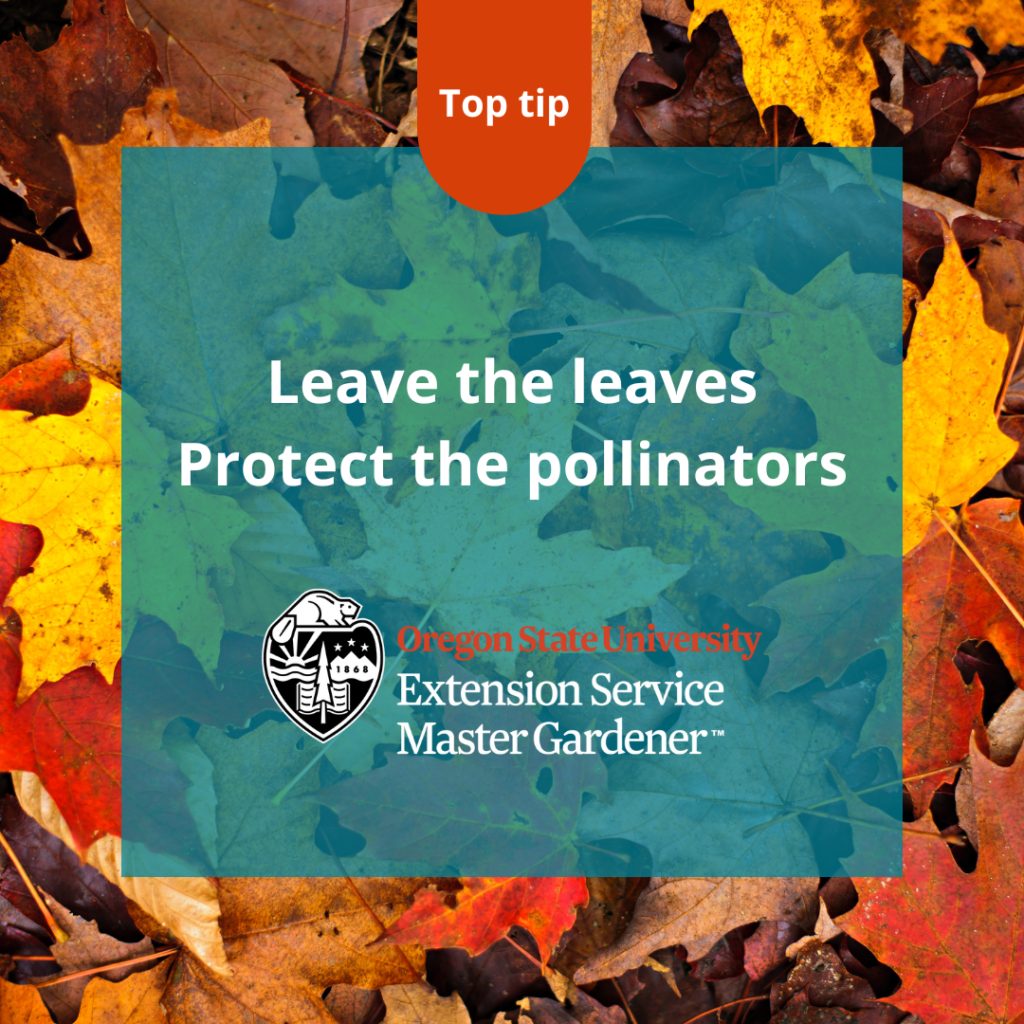by Janet Morlan, Master Gardener Volunteer
This post is part of the Neighborhood Planter Kiosk project.

Beyond Flowers
While flowering plants provide pollinators with food, insects also require shelter for nesting and overwintering. Most bees and wasps create nests in the soil or within dead plant stems or in cavities in wood. Many butterflies, wasps, moths, and lady beetles seek shelter in leaf litter and brush piles. Here are 3 things you can do to provide nesting & winter habitat.
Save the Stems
- Rather than cutting dead stems to the ground, leave stalks for insects
- Provide hollow and pithy stems from perennial flowers and shrubs
- Provide variety of stem heights (8 to 24 inches) and diameters
- Cut stems in spring and leave stems through summer, winter and at least first half of second summer.
Leave the Leaves
Insects, worms, beetles, spiders, and many other small creatures use leaves for winter shelter.
- Leave a thin layer on lawns; a thin layer won’t damage it
- Spread over flower and veggie beds
- Pile around trees & shrubs as mulch
- Rake or blow to move, don’t shred with mower, as that harms the critters
Build Rock Piles and Place Logs
- Rock piles or rock walls (dry wall construction) provide protected crevices for critters
- Keep it messy and loose, with access to bare ground
- Logs with loose bark and beetle holes provide habitat for insects, frogs, lizards, and more

Rotting log with holes and cracks

